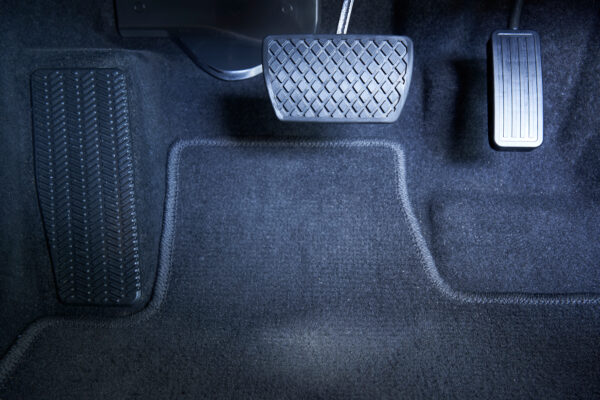
Pedal misapplication prevention encompasses various measures designed to enhance vehicle safety to minimize the risk of accidents related to pedal errors. Whether a driver accelerates instead of braking or brakes instead of accelerating, several technologies and practices aim to reduce the occurrence and consequences of pedal misapplications in vehicles. Preventive measures are important. By the numbers, each year in the U.S., according to available data from the National Highway Traffic Safety Administration (NHTSA), approximately 16,000 vehicle accidents occur due to pedal misapplication, and some are fatal.
Understanding Pedal Misapplication: A Common and Preventable Danger
Pedal misapplication refers to the unintentional or accidental pressing of the wrong pedal in a vehicle, typically the accelerator, i.e., the gas or brake pedal. This can lead to unexpected and potentially dangerous situations, especially when driving automobiles.
The most common occurrence of pedal misapplication involves a driver intending to apply the brake but accidentally pressing the accelerator pedal instead, causing the vehicle to accelerate unexpectedly. Punching the accelerator mistake can result in loss of control, collisions, or other accidents. Pedal misapplication can occur for various reasons, from missing the brake pedal or confusion to distraction or a momentary lapse in attention.
On the other hand, brake pedal misapplications can be just as dangerous. This is when a driver means to step on the gas pedal but inadvertently hits the brake pedal. A sudden, unexpected, and abrupt stop can lead to confusion for other drivers and rear-end collisions. It could also cause injury to the driver or any passengers in the car.
Other examples of pedal misapplications involve the driver pressing both the accelerator and brake pedals simultaneously, which can cause the driver to lose control. A driver might mistakenly press the clutch pedal instead of the brake in vehicles with manual transmissions or vice versa. Sometimes, a pedal is too sensitive to touch or electronic malfunctions, which can cause an unintended acceleration or braking.
Innovative Technologies for Pedal Misapplication Prevention
Though no technology can prevent pedal misapplication, technological developments have brought several safety features to help prevent the consequences of pedal misapplication. These technologies are designed to enhance vehicle safety by reducing the likelihood of unintentional acceleration or braking.
The leading innovation in pedal misapplication technology is the brake override system. Many automakers have installed these override systems in their cars for over a decade. Since 2019, all makes and models have brake-throttle override systems installed as standard. The system utilizes smart pedal technology that prioritizes the braking command over acceleration if the brake and accelerator pedals are pressed simultaneously, causing an unintended acceleration. If the brake and accelerator pedals are pressed simultaneously, the smart pedal system intervenes to slow the car and reduce acceleration.
Collision-avoidance systems are another technology that prevents or reduces the severity of crashes by detecting a potential collision, alerting the driver, and, when necessary, automatically braking. Standard collision-avoidance systems have two technologies: forward collision warning and automatic emergency braking (AEB). Forward collision warning assists a driver by presenting an auditory, visual, or haptic warning before a collision. If the driver does not respond or cannot respond, the AEB automatically applies the brakes to prevent or reduce the severity of the impact.
Although not specifically designed for pedal misapplication prevention, adaptive cruise control systems can help maintain a safe following distance from the vehicle in front. Adaptive cruise control systems automatically allow drivers to adjust the following distance at intervals ranging from close to far. Some systems can bring the vehicle to a complete stop and resume acceleration, reducing the need for frequent pedal use in certain driving conditions.
Practical Tips for Drivers: Navigating the Path to Safer Driving
Though innovative technologies can help prevent the consequences of pedal misapplications, drivers should always remain vigilant and aware when they get behind the wheel. Practicing safe driving habits and maintaining focus can go a long way to contribute to overall road safety.
NHSTA advises drivers to follow specific steps to avoid a pedal misapplication that could lead to a crash. For starters, drivers should familiarize themselves with the vehicle before hitting the road. For example, drivers must know their vehicle’s pedal layout to reduce the risk of pedal misapplications. Gauge the distance between the accelerator and brake with your foot when pivoting between the two. While getting familiar with the distance, always target the center of the brake pedal rather than the right edge. This helps to avoid slipping or missing the brake pedal entirely when driving. Avoid distractions while driving, be cautious when backing out of a parking spot, and always wear proper footwear.
It’s essential for drivers always to be aware of their surroundings, practice good driving habits, and be familiar with their vehicle’s controls to prevent the likelihood of pedal misapplication.
For those injured in an accident due to pedal misapplication, if you have medical bills and other expenses adding up because of it, you may have grounds to file a pedal error accident lawsuit. Victims of a pedal error accident are welcome to contact the law firm Hardy, Wolf & Downing for a free consultation. We can make a difference in your life.

